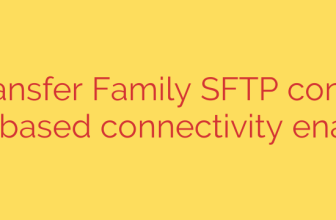
Unlocking Secure Insights: How to Use Query Templates in BigQuery Data Clean Rooms
In today’s data-driven landscape, the ability to collaborate is paramount. Businesses want to combine their first-party data with that of partners to uncover powerful insights—for everything from audience targeting and attribution to product development. Yet, this desire is met with a critical challenge: how to do so without compromising user privacy, exposing sensitive information, or violating data compliance regulations.
The answer lies in privacy-enhancing technologies, and a leading solution is the BigQuery Data Clean Room (DCR). A DCR acts as a secure environment where multiple parties can join and analyze their datasets without ever exposing the raw, underlying data to one another. At the heart of this secure functionality is a powerful feature: Query Templates.
Understanding and mastering Query Templates is the key to unlocking the full potential of secure data collaboration.
The Core Challenge: Collaboration vs. Control
Imagine a common scenario: a retailer wants to collaborate with a publisher to measure the effectiveness of an ad campaign. The retailer has data on who made a purchase, and the publisher has data on who saw an ad. To measure ROI, they need to find the overlap between these two datasets.
Historically, this would involve one party sharing a list of user emails or IDs with the other—a practice fraught with security risks and privacy concerns. Data Clean Rooms eliminate this risk, and Query Templates provide the granular control needed to make the process both safe and effective.
What Are Query Templates?
A Query Template is a pre-approved, parameterized SQL query created by a Data Owner (the party sharing their data). This template defines the exact logic that can be run on their data within the clean room. The Data User (the party seeking insights) can then execute this template by providing specific parameters, but they cannot see or alter the underlying query logic itself.
Think of it like a secure vending machine for data insights:
- The Data Owner builds the machine, stocking it with specific, approved products (the query logic).
- The Data User can make a selection by pressing a button and inserting a coin (providing a parameter, like a
campaign_idordate_range). - The machine dispenses only the requested product (the aggregated result), never revealing the complex machinery or the entire inventory inside (the raw data).
This model ensures the Data Owner retains complete control over how their data is used, while the Data User still gets the valuable, aggregated answers they need.
Key Benefits of Using Query Templates in BigQuery DCRs
Implementing Query Templates is not just a security measure; it’s a strategic advantage that provides a framework for safe, repeatable, and scalable analysis.
Unyielding Security and Governance
The most significant benefit is control. Data Owners define exactly what computations are allowed. This prevents data exfiltration and fishing expeditions, where a user might try to run broad queries to reverse-engineer individual user data. The query logic is locked, ensuring only intended analyses are performed.Enhanced Privacy Compliance
Within the template, the Data Owner can embed critical privacy checks. This includes enforcing aggregation thresholds (k-anonymity), which ensures that a query will only return a result if it pertains to a large enough group of users. If a query result is based on too few individuals, the DCR can be configured to return nothing, protecting against the re-identification of any single person.Streamlined and Simplified Collaboration
Query Templates make life easier for data analysts. Instead of writing complex SQL to join and analyze protected tables, they simply select an available template and supply the necessary parameters. This reduces the potential for error, speeds up the analysis process, and democratizes access to insights without requiring deep SQL expertise from every user.Flexibility Within a Secure Framework
While the query structure is fixed, parameters provide essential flexibility. A Data User can run the same overlap analysis for different advertising campaigns, date ranges, or customer segments simply by changing the parameters. This allows for dynamic exploration without ever compromising the security rules established by the Data Owner.
Actionable Security Tips for Your Data Clean Room
When implementing Query Templates, follow these best practices to maximize security and effectiveness:
- Implement the Principle of Least Privilege: Only create templates for analyses that are absolutely necessary for the business objective. Avoid creating overly broad or generic templates.
- Be Strict with Aggregation Thresholds: Set meaningful minimum thresholds for results. This is your primary defense against a user trying to isolate small groups or individuals by running multiple parameterized queries.
- Regularly Audit and Review Templates: As business needs change, review your existing Query Templates. Deprecate those that are no longer needed to reduce the potential attack surface.
- Use Clear and Descriptive Parameters: Name your parameters clearly (e.g.,
start_date,campaign_identifier) so Data Users know exactly what input is required. This minimizes confusion and ensures the templates are used correctly.
By leveraging Query Templates within BigQuery Data Clean Rooms, organizations can finally solve the data collaboration paradox. They can forge powerful partnerships and extract valuable, combined insights while upholding the highest standards of data security and user privacy. It represents a foundational shift toward a more secure and responsible data-driven future.
Source: https://cloud.google.com/blog/products/data-analytics/query-templates-for-bigquery-data-clean-rooms/








